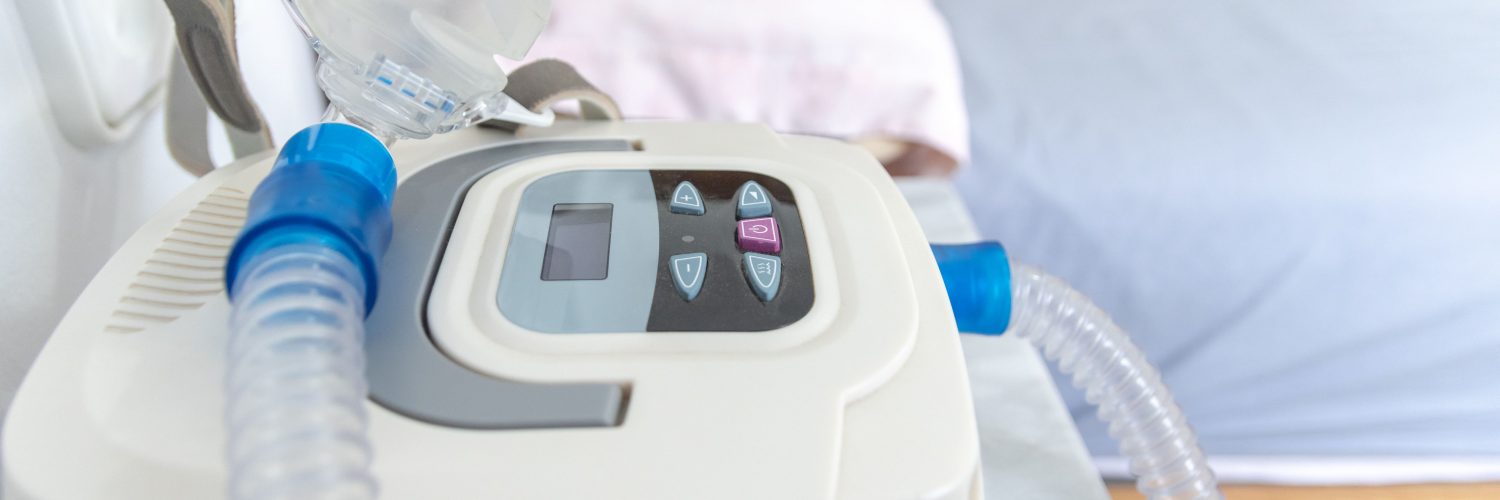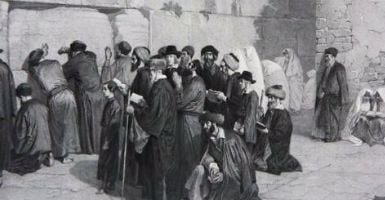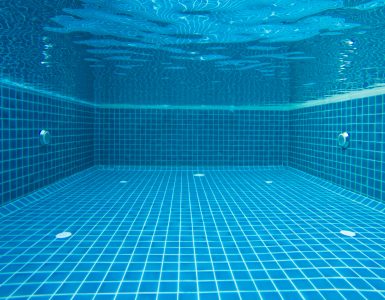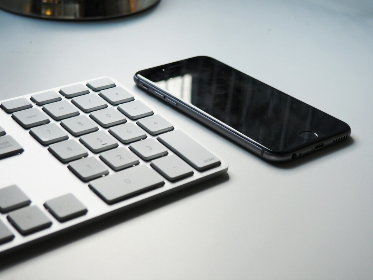One of the most common sleep-related disorders is obstructive sleep apnea (OSA), which is characterized by repeated episodes of upper airway obstruction during sleep that lead to apnea or reduced inspiratory airflow. The obstruction is often caused by relaxation of the soft tissues of the upper airway, including the tongue, leading to the snoring, gasping, and respiratory pauses often seen in patients with this disorder.
The apneic and hypopneic episodes often result in the patient awakening partially to relieve the obstruction or reposition himself; these repeated “micro-arousals” prevent him from experiencing restful sleep and can lead to chronic daytime sleepiness. Observational studies have consistently demonstrated a consistent association between OSA and cardiovascular disease (including hypertension, cardiac arrhythmias, and coronary artery disease), although causality has not been proven as these diseases are multifactorial. In any case, evidence has accumulated that treatment of OSA with continuous positive airway pressure (CPAP) can improve cardiovascular outcomes.
In the past, the most common treatment approaches was based upon surgical excision of soft tissue to expand the airway and reduce obstruction (e.g., tonsillectomy and/or adenoidectomy and uvulopalatopharyngoplasty) . However, in recent decades the use of noninvasive positive airway pressure therapy (CPAP or BiPAP) has become the cornerstone of therapy. These devices provide a continuous flow of air through the nose or mouth to maintain airway patency during exhalation and prevent the obstruction that causes apnea.
While technological advances have improved the quality and functionality of these devices, they have also created Halachic issues. Earlier machines were basically outfitted with a simple on-off mechanism, and once turned on they would deliver air continuously until turned off, regardless of whether the airway circuit was connected to the patient. The current generation of devices can begin delivering pressure automatically when the patient dons the mask and halt when it is removed. In addition, internal sensors collect data on the therapy and display it on the screen and store data for review and follow-up with the patient’s physician.
Clearly the older devices raise fewer concerns of Hilchos Shabbos. They may be activated prior to Shabbos and no further action is required. However, the newer devices raise a number of Halachic questions, as discussed by Rav Yitzchak Rubin Shlit”a in a 5774 essay:[1]
1. Is the computerized monitoring of usage, the altering of airflow, and the recording of data – that occurs while the device is on and the mask is in place (i.e., during sleep) – considered a direct consequence of the person’s action(s)?
2. It would be ideal to place the device on a timer (before Shabbos) that would activate it close to the time when the person intends to go to sleep. However, apart from the fact that this does not address the Halachic issues discussed in the previous question, this could be impractical, as some devices will automatically turn off if it does not detect that it is attached. In addition, one cannot reasonably put the mask on before the device has been activated because it is not possible to breathe through the circuit while the device is off.
3. The most problematic issue is with the devices that will not begin to deliver air until the mask is placed on the face. Is the act of donning the mask and beginning to breathe through the circuit to activate the machine considered a Melacha?
Obviously, if the sleep apnea is a direct threat to the patient’s life, he may use a CPAP device on Shabbos. (Of course, he should attempt to obtain a device with minimal Halachic issues as described above. Although the earlier generation of devices has fewer issues, today these are almost impossible to obtain. Therefore, he should plug it in (and turn it on) before Shabbos and place the mask on with a Shinui so as to minimize the Chilul Shabbos.)
If a person’s life will not be directly endangered without the CPAP, but he will merely be unable to sleep, what is permissible? This question was the subject of an interesting debate between Rav Yitzchak Rubin Shlit”a and Rav Yitzchak Zilberstein Shlit”a.
Rav Rubin’s primary contention is that each case needs to be judged on its own merits. In other words, there are cases in which refraining from the use of CPAP would not constitute a Sakana. However, as we will see below, this premise was disputed by Rav Zilberstein. Rav Rubin, in his original correspondence with Rav Zilberstein, asked how those who need to use the device on Shabbos should do so. He attested that a certain physician had told his patient that failing to use the device on Shabbos and Yom Tov would harm his health over the years. Rav Zilberstein replied: “This would appear to be a matter of Safek Pikuach Nefesh. He should use it with a Shinui. If possible, one should ask the treating physician about it. If he says that the patient needs to use the device in the regular way, the patient should do so.”
In his response, Rav Rubin expressed surprise at the assumption that anybody who uses a CPAP device is in a state of Safek Pikuach Nefesh, given that many use it simply to help them sleep. However, Rav Zilberstein responded again, decisively: “If there is any concern of possible Pikuach Nefesh, even if it is in the future, one should permit the use of the device. A person who cannot breathe regularly [while sleeping] without assistance is likely considered to be slightly endangered.”
[Rav Zilberstein’s intent is not entirely clear. He appears to be saying that the cumulative effects of not using the CPAP for one day a week over a number of years is likely to contribute to the development of an illness that would be considered a Sakana in the future. While we cannot definitively determine whether this is accurate or not, we can say that it may qualify as “Pikuach Nefesh Asidi”. This somewhat complex Halachic principle states that if the cause of a Sakana is already present and increases over time, one may already desecrate Shabbos on its account, even though there is no current danger.]Putting aside this debate, let us focus on a case in which failing to use the CPAP on Shabbos and Yom Tov will not endanger a person’s life.[2] However, without the device, he is unable to sleep, leading to great distress. If he is unable to attain a device that eliminates all of the Halachic concerns enumerated above, may he use CPAP on Shabbos?
The Institute of Technology and Halacha came up with an innovative solution for devices that will only deliver airflow when they detect that the patient is wearing the mask.[3] They suggest that one place a garment, such as a sock, over the mask on Erev Shabbos. This will activate the device (because it will think that the patient has placed the mask over his mouth) and it will operate continuously throughout Shabbos. When the patient wants to go to sleep he should remove the garment and place the mask over his mouth. The device will not stop immediately when the garment is removed – it takes several seconds, during which time the patient will swiftly place the mask over his mouth or nose. This will ensure that the device operates continuously throughout Shabbos.
Admittedly, this does not resolve the issue of the digital record made by the device while it is running. The Institute recommends removing the card or [at least] covering the monitor so that there will be no benefit from the recorded data.
As Talmidim of HaGaon Rav Asher Weiss Shlit”a, it is important that we review his opinion on digital recording that takes place automatically.
In Shu”t Minchas Asher (1:32), Rav Asher contends that we only consider completing an electrical circuit to be a Melacha when it produces “a benefit and result that is visible to the eyes or one of the other senses, such as various electronic devices that a person activates to his benefit. However, it is common that a person activates various electronic systems without intention, causing electrical changes whose benefit and outcome is not visible or useful to us… in all of these cases, there is no element of a Melacha – they are not Meleches Machsheves.”
Rav Asher cites several examples:
- Devices that supply [positive airway pressure] during sleep and have highly sensitive sensors to detect how a person is breathing and are affected by his every movement.
- Advanced hearing aids that automatically make adjustments according to the degree of background noise as the person moves from place to place. These adjustments are made by means of tiny electrical circuits that operate the device.
- Patients hospitalized in intensive care units are connected to monitoring devices that collect data, which is displayed on an electronic monitor. The patient’s breathing, movement, or any exertion causes tiny electrical circuits to close and the information on the monitor to change.
- Electronic handcuffs used as an alternative to detention. The handcuff measures the distance between it and the home detention location. Leaving the house or returning to it (which is permitted in some cases) sends a signal to the police station. More sophisticated handcuffs are based on a satellite tracking system that constantly transmits the person’s location. Similar systems are utilized by relatives of Alzheimer patients to supervise them.
- Heat and motion sensors as are found in most hotels. We do not refer to the air conditioner or lights switching on or off when the guest enters or exits a room, but to their activity being extended according to the guest’s continual movement in the room.
- Use of cellphones by physicians who need to be available for cases of Pikuach Nefesh. May a physician move with the phone even though it causes changes in the signal strength that appears on the screen, produced by the closing of tiny electrical circuits?[4]
In his Teshuva, Rav Asher explains why he believes that these examples do not constitute a Melacha or Meleches Machsheves. According to those who hold that the use of electricity on Shabbos violates the Isur of “Molid” (creating something new), this would certainly only apply to producing something that can be seen and from which a person can benefit. A “product” of electrical activity that occurs on its own cannot be considered Molid.
Even those who hold that the use of electricity violates the Melacha of Boneh (by “building” a circuit) would agree that it does not apply in these examples. The tiny electrical circuits are formed and broken in fractions of a second; no significant or observable result can be observed. This does not resemble “building” at all, even if completing a fixed, regular circuit does constitute Boneh.
Rav Asher then discusses his own position which is that completing an electrical circuit on Shabbos violates the Melacha of Makeh b’Patish:
Likewise, according to my approach that it [completing an electrical circuit] constitutes Makeh b’Patish due to the significance of the [electrical] connection – it seems clear that in all of these cases [delineated above] there is no [violation of] Makeh b’Patish. In truth, if we are approaching this in the context of Makeh b’Patish it is even more understandable that something that happens by itself, without [human] intention, and without a specific act, and which has no permanence, cannot be defined as a Melacha. The Poskim have already stated that Makeh b’Patish is unlike other Melachos; any act that has no intent or purpose is not defined as the Melacha at all, as evident from the Magid Mishna (Shabbos 12:2), whose opinion is discussed at length by the Acharonim. I have discussed this at length elsewhere.[5]
The source of the principle, invoked by Rav Asher, that Makeh b’Patish depends upon intent more than the other Melachos (for which we say that if it is a situation of “Pesik Reisha”, in other words a Melacha is bound to occur from a person’s actions, we ignore his intent) is the following comment of the Magid Mishna (Shabbos 10:17 and 12:2):
For when he intends it, he performs a Melacha, but when he does not intend it, it does not constitute a Melacha at all. For he does not wish to make a vessel from at all, akin to cutting a splinter[6] that we mentioned in Perek 11; if he does not cut it to clean his teeth, though it is fitting to perform that task, he is exempt. For anything for which the liability would be due to fashioning a vessel – a person who does not [intend to] fashion it, is exempt, even according to R’ Yehuda who rules that one is liable for a Davar she’Eino Miskaven.
In Minchas Asher (Shabbos 3) Rav Asher explains this concept:
…the essence of the Melacha is the completion of a vessel or other item. If he does not intend to do that, it is not a Melacha at all, even if it is a Pesik Reisha.
Some further explanation is warranted. With regard to other Melachos there is a definite, creative action that constitutes the Melacha. Therefore, if it is Pesik Reisha that this action will result, the intent is irrelevant. However, with regard to Makeh b’Patish, defining an action as this Melacha depends on the context, namely, that it completes a vessel. If this takes place without intent and the vessel is practically completed of its own accord, to no benefit of the person performing the action, we are left only with the action which, as stated, does not define the Melacha.
Based on this principle (that Makeh b’Patish is not violated without intent), Rav Asher (in an as-yet unpublished Teshuva) explains the difference between the use of a hearing aid on Shabbos (which his permitted by most Poskim) and the use of a microphone (which is not). Many struggle to explain the difference between the two, after all, both work on the basis of a speaker that detects sound waves and amplifies them so that they can be heard. Rav Asher explains the difference based on his contention that the use of electricity on Shabbos is forbidden due to Makeh b’Patish.
As stated, with regard to Makeh b’Patish, a person’s intent defines whether the action is a Melacha or not. Therefore, the use of a microphone does constitute a Melacha because it is a direct and intentional act. However, a hearing aid is used passively to amplify speech by others and filter out ambient noise but the user does not directly or intentionally operate the device.
In conclusion, Rav Asher details the practical Halacha in this regard in a Teshuva that appears in Shu”t Chelek Beis (34):
- The activation of a device’s internal electrical systems that are not noticeable and the person is completely unaware of them does not constitute a Melacha. Therefore, the use of a hearing aid and a device that supplies positive airway pressure is permissible.
- The use of systems in which the alterations in electrical currents appear on a screen depends on whether the person has a need or any interest in them. If they are irrelevant to him, the appearance on the screen does not make their usage as a Melacha. For example, the display of signal strength does not interest a person when he walks about with a phone in his pocket. The same is true of the location device for Alzheimer patients; the relatives have no use for the record of the information when the patient is with them (and, in a case where the patient goes missing, the display of his location is Pikuach Nefesh).
[1] [Editor’s note: This essay is not intended to be a comprehensive review of current CPAP technology, especially as the available devices vary widely from country to country. The features mentioned here may not be consistent with the reader’s experience but are nonetheless relevant in terms of the Halachic issues that will be discussed. Questions of Halacha l’Maaseh should be presented to a Posek who is familiar with the technology and optional features of the prescribed device.]
[2] [Editor’s note: Although the cumulative effect of multiple episodes of apnea may contribute to cardiac or pulmonary complications over a prolonged period – i.e. years – since a single night without CPAP is not likely to directly cause illness, for the sake of discussion, we will consider the hypothetical case of an otherwise healthy individual in whom this would be considered such a distant concern that there would not be a question of Pikuach Nefesh.]
[3] This may not work for all devices of this type, as many actually detect the patient’s inspiration to trigger airflow and will not be “tricked” by this method. However, many of the newer devices have an option to turn off the automatic-flow-when-connected and/or automatic-stop-when-disconnected feature(s) and can run continuously even when the patient is not wearing the mask.
[4] In Shu”t Minchas Asher – Coronavirus (Telisa’a 7) which was published during the pandemic, Rav Asher discusses another practical application, namely, passing by cameras that measure a person’s temperature, at the entrance to hospitals.
[5] Rav Asher concludes his Teshuva by stating that anybody who can avoid the use of technologically advanced devices that are constantly adjusting to changes in location or effects of the user’s actions is praiseworthy. However, for the sake of a Choleh or in a pressing situation, and certainly in the case of even a distant concern for Pikuach Nefesh, there are Poskim to rely upon and one may be lenient.
[6] I.e., into something that could be used as a toothpick
.















Add comment